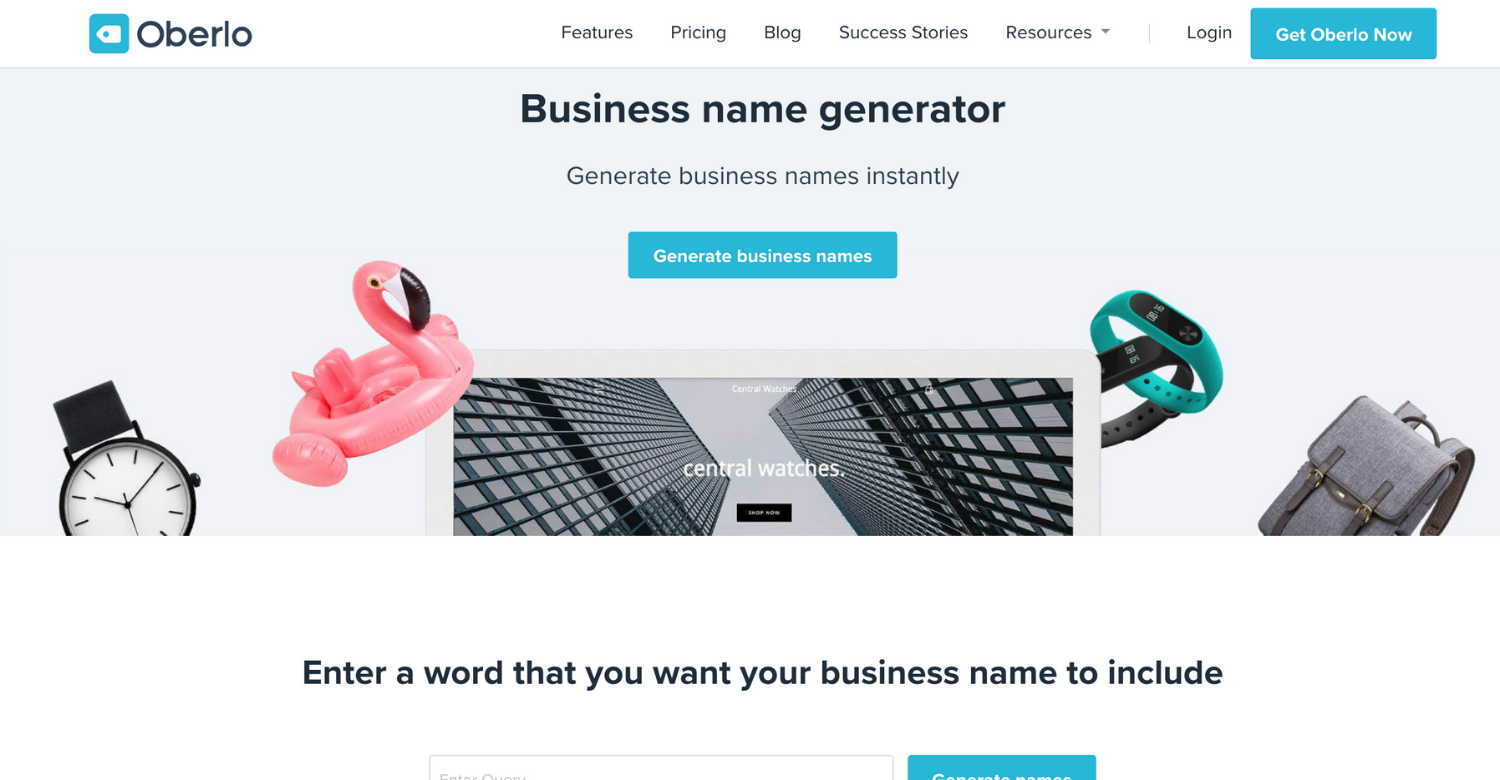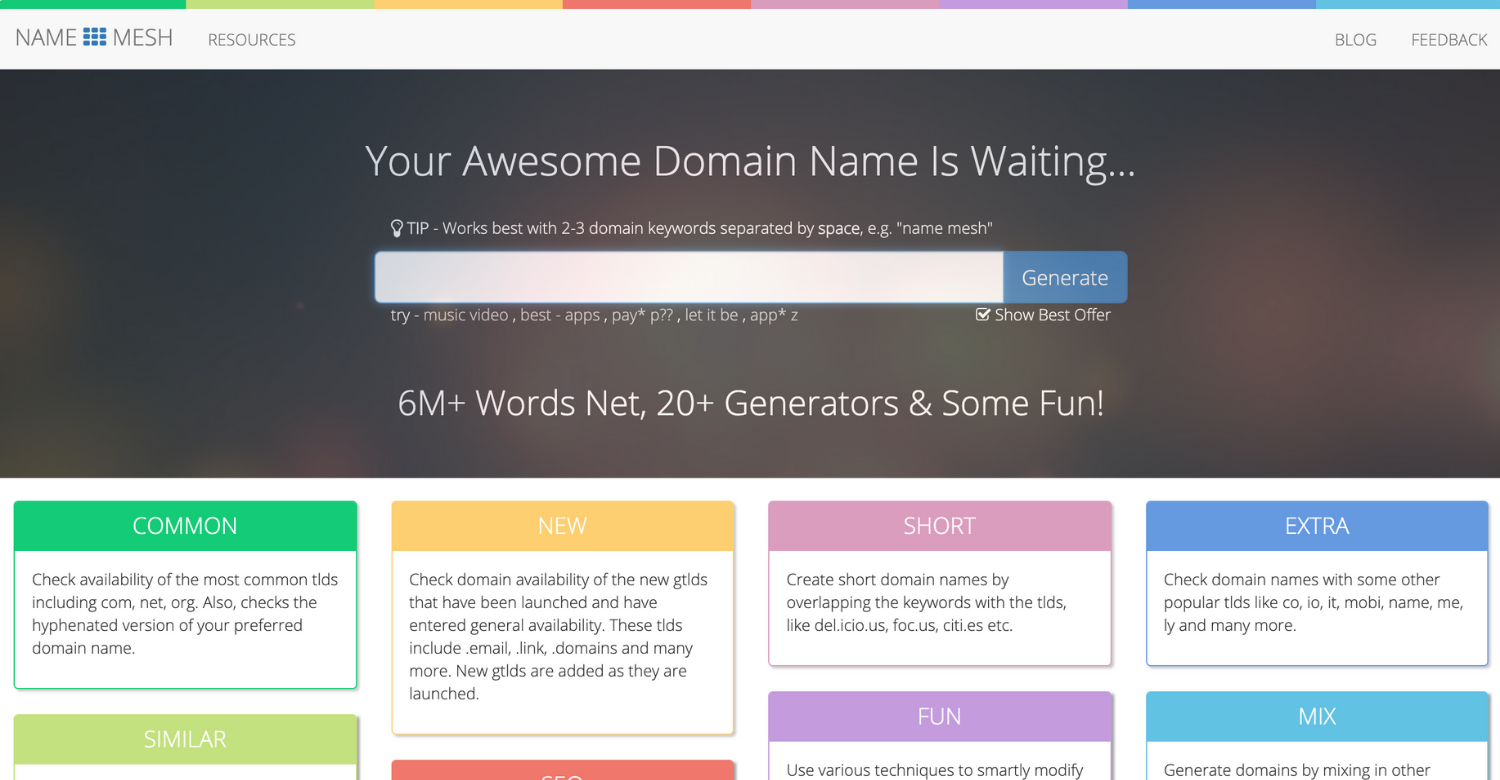
The Business Owner’s Guide to Choosing a Name for Your Business
Sep 09, 2019
In the beginning stages of choosing a name for your business, you’ll have moments of analysis paralysis.
And it makes sense. It’s an important decision.
The name of your company needs to be catchy and memorable. And that’s a lot of pressure to put on yourself.
It’s so easy to spend time spinning your wheels sorting through different options.
So we’re going to save you some time. Check out this structured process to help you create, test, and decide on a name for your company.
Step 1: Research your customers and industry
You know what you want to sell. But before you start coming up with names, you’ll want to have a good idea of who your target market is.
What’s their age? Gender? Likes and dislikes?
These are all factors to consider as you conduct research. The answers to these questions will zero in on what you want customers to take away from it.
As you dig into your industry, be aware of any cultural issues or negative associations, people may have which might offend them.
The last thing you want to do is to alienate a group of potential customers.
Step 2: Go for a brandable, uncommon name
Your business is unique, and its name needs to be remarkable.
It’s the key to how you make a business name your own.
Having a one-of-a-kind name makes it much easier to build a memorable brand. Why? It gives you control.
You don’t need to worry about creating confusion in the market with a similar name to a competitor. You own the name and can ensure its longevity.
Plus, you’ll have more options when it comes to obtaining custom domains and business licenses.
As an example, say you plan on selling organic snacks. You know that three of your main competitors use variations of “organic,” “natural,” or “bio” in their names.
 Now you might think that you need to also have one or more of these words in your name. Otherwise, how would anyone know what you’re selling?
Now you might think that you need to also have one or more of these words in your name. Otherwise, how would anyone know what you’re selling?
But remember, the goal of naming your business is to choose one that’s brandable. One where you can create and mold how it appears to the world.
As a different solution, let’s create names with more flare which don’t use those words.
 See how you can create a new name combination that’s related to service offered, yet still distinctive?
See how you can create a new name combination that’s related to service offered, yet still distinctive?
So while it might be tempting to jump on the bandwagon and name your business something similar to the competition — don’t do it.
Copying other businesses is not a sound way to differentiate yourself to customers.
Step 3: Make time for a good brainstorming session
Now that you have an idea of who your customers are and the benefits of having a branded name, it’s time for the fun to begin.
Let’s create your company’s name.
Look for inspiration everywhere
Don’t limit yourself to generic names like “ABC Co.” The sky’s the limit when it comes to what you can finagle together to create something new and innovative.
Also, keep an ear open and listen to what others are saying. Who knows when a simple statement can give you a creative spark.
Another way to get inspired is by taking a walk and letting the mind wander. It’s amazing what comes up when your brain’s on autopilot.
Write down anything and everything
Part of the brainstorming process is to write down every possible idea that comes to mind. That means scribbling out crazy puns. Wacky phrases. All of it.
Don’t limit yourself to safe options.
Now is the time to put whatever you want on the list. It doesn’t even matter if it’s completely nonsensical. Write it down anyway.
Why? Because there’s always a diamond in the rough. You only need to get it out of your head and onto paper.
Rest on it
You’ve got your list of business names. Now instead of forcing yourself to make an immediate choice, take a break. Set the first draft aside for a bit and come back to it.
Give yourself a couple of days and clear your head. Once it’s time to come back to it again, you can look at what you’ve written from a fresh perspective.
Narrow Down the List
After taking a break from the names you’ve so lovingly created, it’s time to pick the winners. During this process, you’ll want to keep in mind these tips to guide you:
- Keep It Short
The name needs to be memorable. One or two words is ideal for people to remember. Longer names can become confusing and sadly, quickly forgotten. - Easy Pronunciation is a Must
Say the names aloud. Which options naturally roll off the tongue? Options that are difficult to pronounce could be remedied by addressing the spelling. If not, then you might want to ditch the idea altogether. - Get Feedback from Others
Ask friends, family, and even your target market to give feedback on the names you’ve chosen. It’s an opportunity to get valuable feedback and insights you hadn’t thought of before. - Choose a Name that Can Grow with You
As you work through the list, you’ll want to avoid ultra-specific names. For instance, Sony is more flexible than “Electronic Devices, Inc.” Remember, once you name this business, it’s going to last throughout the life of the brand.
Step 4 (Optional): Use business naming tools for inspiration
Sometimes you might need some extra help. Or you want to shorten the time spent brainstorming.
There are several business naming tools available which can speed up the process.

Oberlo – This is a simple tool where you can enter a word (or words), and it will serve up around 100 word combinations. There are plenty of options to inspire you.

Namemesh – Here, you’ll find naming suggestions based on domain name availability. Namemesh shows results using similar words, unique spellings, and options based on SEO-friendliness.

Shopify Business Name Generator – As a tool, it’s similar to Oberlo in its functionality. It’s ideal to use if you also plan on opening an online store. Once you find a business name, you can instantly set up your store on Shopify.

Namium – As a free app, Namium is an excellent site for generating ideas. After choosing a word (or words), you can toggle between options using various prefixes and suffixes. If you’re feeling adventurous, try switching between the six different target audiences based on language.

Thesaurus – When all else fails, you can go back to basics and consult a thesaurus. Here you’ll find synonyms and antonyms related to the words you’re thinking of. It’s a great way to kickstart some new concepts.
Step 5: How to handle similar business names
There are occasions where no matter how thorough you are in your research, another company already exists with your name.
If you’re intent on keeping the name, ask yourself these two questions.
Is this a direct competitor?
If so, you’ll want to rethink using the name entirely — even if you love it. There’s too much risk involved, and it will be challenging to brand the name.
Does this other business have any negative associations that could impact you?
A company with risqué or questionable service offerings could potentially confuse customers.
Should you decide to keep the name, there could be difficulties getting a domain name or legally registering the business. You have to consider whether or not the benefits of this name outweigh the risks involved.

Step 6: Finding the perfect domain name
People usually focus on searching for the domain after they make a decision. Sadly, they could find that their options are limited.
We recommend searching for available domains as you brainstorm business names.
Spend time doing this upfront and save yourself the frustration of not getting the best site domain.
As you conduct your search, here are a few things to consider to simplify the process.
Look at Hosting Providers
Hosting companies like Namecheap or Bluehost will have tools available for where you can search for and buy domains.
Instant Domain Search is also an option to see a comprehensive list of which domains are for sale, available, or have a live site.
Keep Your Domain Short and Simple
Complicated URLs are not ideal for SEO. Domain names with tricky spellings or long words should be avoided. Try to keep it between one to three easy words.
Check for Word Variations
If the perfect domain for your business isn’t available, explore ways to shorten or extend it. For instance, domains with [your business name + service or city] are generally less competitive.
Consider Buying a Domain Name
Businesses often buy domains owned by other people. This strategy is generally an expensive option, especially if the name contains a single word or familiar phrase.
Step 7: Research Existing Trademarks and Business Structure
If you plan on trademarking the name of your company, check the USPTO to see if it’s already registered.
You’ll also want to check with the Secretary of State to see if your chosen name is already in their records. If it’s is too similar to another, you might not be able to register it.
Conclusion
Naming your business is an inspiring exercise in creativity. It’s a chance to come up with a signature name will live in the hearts and minds of your customers.
Remember that as you go through the process, think about how it will grow with the business.
You aren’t choosing a name. You’re building a legacy.
So once you find the right one, the next step is to build a brand around it that people will recognize for years to come.




